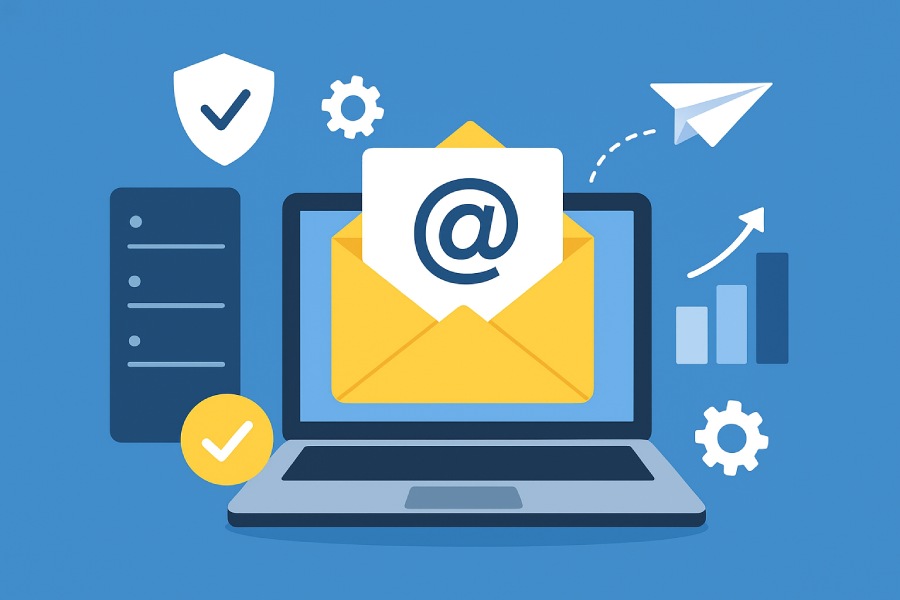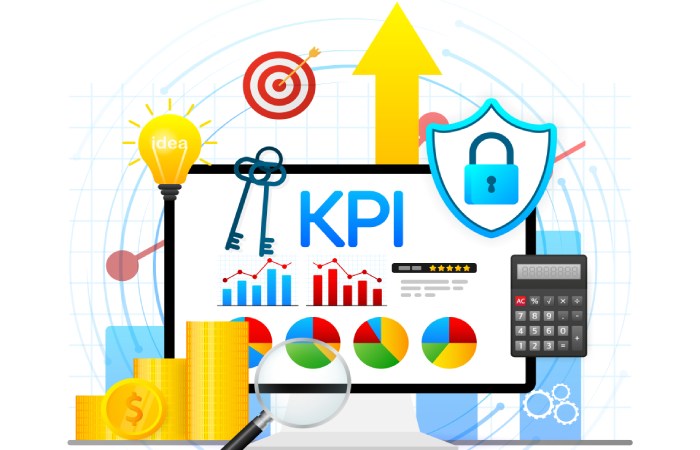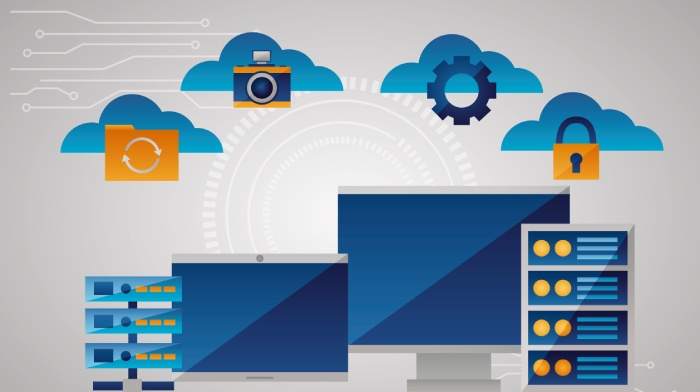An online SMTP server functions as a critical component of the email protocol infrastructure, facilitating the transfer of outgoing emails over the internet. SMTP, or Simple Mail Transfer Protocol, is the standardized protocol that governs how email servers, or mail transfer agents (MTAs), communicate to ensure reliable email delivery. Acting as an outgoing mail server, an SMTP server handles the sending process, routing emails through SMTP relay channels to the recipient’s email server.
Online SMTP servers can be hosted by various providers, ranging from cloud-based email sending services such as SendGrid, Amazon SES, Mailgun, and SMTP.com to self-managed mail server software like Postfix, Exim, Microsoft Exchange Server, or hMailServer. These servers accept SMTP protocol commands from SMTP clients—usually integrated within email client configuration or applications—and forward emails accordingly. Understanding SMTP connection mechanics, including SMTP ports like port 25 and port 587, is essential for managing and optimizing email throughput effectively.
The Role of SMTP Servers in Email Campaigns
SMTP servers serve a foundational role in powering successful email marketing campaigns and transactional email systems. Whether disseminating bulk email newsletters or delivering time-sensitive transactional messages such as password resets or order confirmations, SMTP servers ensure emails traverse securely and efficiently across networks.
In an email campaign context, the SMTP server manages numerous critical functions:
- Email Queue Management: Efficient handling of the email queue ensures timely delivery and prevents bottlenecks in dispatching large volumes.
- SMTP Authentication: Utilizing methods such as login credentials and OAuth to verify the sender’s identity, this enhances SMTP security and reduces spam risks.
- TLS Encryption and Email Encryption: SMTP gateway implementations support encryption protocols like TLS to safeguard emails during transit.
- Email Header Inclusion: Proper construction of email headers aids in authentication and correlation with SPF records, DKIM signatures, and DMARC policies—vital for email spoofing prevention and improved inbox placement.
- Email Bounce Handling: SMTP servers process bounce-backs and generate logs for undelivered emails, enabling better list hygiene and campaign optimization.
- SMTP Debugging and Monitoring: Advanced monitoring tools analyze SMTP logs, error codes, and server performance metrics to proactively address issues such as SMTP throttling or blacklisting.
Providers such as Gmail SMTP, Outlook SMTP, Zoho Mail, Yahoo SMTP server, and business-focused platforms like Google Workspace and Microsoft Exchange Server provide SMTP client configurations suitable for enterprises of all sizes. Dedicated email delivery platforms including SparkPost, SMTP2GO, SocketLabs, Mandrill, Mailjet, Pepipost, and Epsilon specialize in enhancing email deliverability and handling vast volumes of bulk email campaigns.
Benefits of Using a Reliable Online SMTP Server
Deploying a reliable online SMTP server architecture for your email campaigns provides several tangible benefits:
- Improved Email Delivery Rates: Properly configured SMTP servers using SPF, DKIM, and DMARC records reduce the chances of emails landing in spam folders.
- Scalability for Bulk Email: Cloud-based SMTP email sending services effortlessly handle high-volume campaigns with features like SMTP throttling controls and email queue management.
- Enhanced Security: Advanced SMTP authentication, TLS encryption, and anti-spoofing protocols ensure communications are secure against interception and phishing.
- Detailed SMTP Logs and Monitoring: Real-time SMTP server monitoring allows administrators to track SMTP connection statuses, analyze SMTP error codes, and resolve delivery issues swiftly.
- SPF, DKIM, and DMARC Integration: These essential DNS records authenticate emails and protect domain reputation, thereby mitigating email spoofing and phishing attacks.
- Simplified SMTP Server Setup and Management: Many providers offer intuitive SMTP virtual server configurations, alleviating the complexities of in-house mail server software installation.
Utilizing platforms like SendGrid or Amazon SES reduces administrative overhead and allows marketers to focus on crafting impactful email content and campaigns rather than dealing with server maintenance and SMTP troubleshooting.
Key Features to Look for in an Online SMTP Provider
When selecting an online SMTP server provider for email marketing, transactional email, or bulk email processing, consider the following key features:
- SMTP Authentication Support: Robust authentication mechanisms to secure SMTP connections and prevent unauthorized use.
- Support for SMTP Ports: Availability of standard ports such as SMTP port 25 (commonly used but often blocked by ISPs), SMTP port 587 (recommended for TLS encryption), and sometimes port 465 for secure SMTP is crucial.
- TLS Encryption and Email Encryption Services: End-to-end encryption for transport-layer security.
- SMTP Relay and SMTP Proxy Capabilities: Ability to route emails through multiple SMTP gateways or proxies for optimized delivery paths and redundancy.
- Comprehensive Email Queue Management: Efficient handling of high-volume mail queues to prevent delays and maintain throughput.
- Email Bounce Handling and Feedback Loops: Tools to manage and process undeliverable emails for better list hygiene.
- Spam Filtering and SMTP Blacklist Monitoring: Integration with major email spam filtering technologies and proactive reporting of blacklisting status related to SMTP server IPs.
- Detailed SMTP Logs and SMTP Debugging Tools: Essential for diagnosing SMTP protocol command errors and delivery failures.
- Transactional Email API and Bulk Email Capabilities: Access to APIs or SMTP interfaces that support segmented email marketing and transactional email workflows.
- SMTP Throttling Controls: Allows tailoring the email send rate to comply with recipient policies and avoid spam filters.
Providers such as SMTP2GO, SocketLabs, Pepipost, and Mailjet often incorporate these features, combined with analytics dashboards to monitor SMTP server performance and email campaign metrics efficiently.
How to Set Up an Online SMTP Server for Your Campaigns
Setting up an online SMTP server for your email campaigns involves several strategic steps to ensure secure and efficient email delivery:
1. Select the SMTP Server Type
Determine whether to use a managed service like Amazon SES, SendGrid, or Mandrill, or install mail server software such as Postfix, Exim, or Microsoft Exchange Server. Managed services simplify SMTP server setup and provide scalability and monitoring tools.
2. Configure SMTP Settings in Your Email Client
In email client configuration, specify the outgoing mail server’s SMTP server IP or domain name, and assign the correct SMTP port (commonly port 587 for TLS). Configure SMTP authentication using credentials or tokens provided by the email sending service.
3. Setup SPF, DKIM, and DMARC Records
Implement SPF records to authorize your SMTP server IPs as legitimate senders, configure DKIM for cryptographic signing, and establish DMARC policies for email spoofing prevention. These DNS records play a central role in building a trusted sender reputation.
4. Enable SMTP Authentication and TLS Encryption
Configure SMTP authentication to require sender identity verification, and strictly use TLS encryption for SMTP connection security, safeguarding email content and credentials during transit.
5. Manage Email Queues and Monitor SMTP Logs
Employ SMTP server monitoring tools to review SMTP logs and performance indicators. Address SMTP error codes promptly using SMTP debugging utilities to maintain optimal email delivery.
6. Implement SMTP Relay and SMTP Gateway Settings
For enhanced reliability, configure SMTP relay paths or deploy SMTP gateways to distribute email traffic and prevent throttling by recipient servers or SMTP blacklists.
7. Integrate Email Bounce Handling Mechanisms
Establish processes for interpreting bounce notifications and undeliverable reports to refine mailing lists and maintain sender reputation.
8. Optimize for Bulk Email and Transactional Email Needs
Different campaigns have varied requirements; transactional emails demand immediate processing with high deliverability, whereas bulk email campaigns might be subject to throttling and queueing to comply with ISP guidelines. Tailor SMTP server setup accordingly.
Providers like Gmail SMTP, Outlook SMTP, and Yahoo SMTP server require additional considerations around their proprietary SMTP client configurations and often enforce stricter usage policies. Conversely, services such as SparkPost and SMTP.com offer comprehensive API-driven SMTP server setups designed for both bulk and transactional email with built-in monitoring and analytics.
Implementing these best practices ensures that your email campaigns leverage the full potential of a reliable online SMTP server, delivering relevant messages securely and efficiently to your audience while maintaining a strong domain reputation.
Enhancing Email Deliverability with a Trusted SMTP Server
Ensuring reliable email delivery is paramount for any organization leveraging bulk email or transactional email campaigns. The choice of an efficient Simple Mail Transfer Protocol (SMTP) server plays a pivotal role in maximizing email deliverability. A trusted SMTP server, such as those provided by SendGrid, Amazon SES, or Mailgun, integrates essential functionalities like SMTP authentication and TLS encryption to secure your outgoing mail server’s communication and minimize delivery issues.
Using a reputable mail transfer agent (MTA) reduces the risk of your SMTP server IP being blacklisted, a common problem that stems from sending unsolicited emails or poor email marketing practices. Trusted providers employ SPF records, DKIM, and DMARC protocols to authenticate outbound messages, solidifying email spoofing prevention and enhancing the legitimacy of your emails in the eyes of spam filters and recipient mail servers.
Furthermore, SMTP server monitoring and comprehensive SMTP logs offer administrators invaluable insights into server performance, SMTP connection attempts, and diagnostics via SMTP debugging. Such insights enable detailed management of the email queue and timely resolution of SMTP error codes that may indicate delivery failures or authentication issues, leading to enhanced email delivery success.
Common Challenges and How to Overcome Them
When managing an SMTP server setup, common challenges include SMTP blacklists, SMTP throttling limits, and dealing with SMTP error codes indicating failed deliveries. Bulk email campaigns are especially prone to these issues due to the high volume of emails, which may trigger spam filtering mechanisms or SMTP proxy limitations.
SMTP throttling, designed to control email sending rates for server health and anti-spam measures, can be managed effectively by configuring your email client with appropriate SMTP settings or by utilizing advanced email sending services like SMTP2GO or SocketLabs, which offer dynamic throttling management. SMTP port selection — typically port 587 for secure submission or port 25 for legacy configurations — is also critical for optimized transmission.
Another challenge lies in email bounce handling, which requires accurate parsing of bounce messages and updating SMTP logs. Using mail server software such as Postfix or Exim facilitates better handling mechanisms, while third-party services like SparkPost and Mandrill provide integrated bounce processing alongside detailed SMTP gateway management.
Lastly, ensuring SMTP security is crucial to protect against email spoofing and unauthorized use. Implementing multi-layered security including TLS encryption, SMTP authentication, and SPF, DKIM, DMARC records is essential for maintaining a trustworthy SMTP virtual server environment.
Comparing Popular Online SMTP Server Providers
Several online SMTP providers dominate the market, each offering distinct advantages depending on specific use cases:
- DuoCircle provides secure SMTP relay services with advanced spam filtering, reliable email delivery, and real-time monitoring, making it a trusted choice for businesses of all sizes. With strong focus on deliverability, phishing protection, and seamless SMTP integration, DuoCircle is well-suited for organizations seeking both performance and security in their email communications.
- SendGrid offers robust API integrations, advanced analytics, and extensive SMTP server monitoring, ideal for large-scale email marketing and transactional email workflows.
- Amazon SES is a cost-effective solution with scalable infrastructure, supporting excellent SMTP relay capabilities with comprehensive email encryption and bounce handling features.
- Mailgun targets developers requiring granular control via SMTP protocol commands with flexible email queue management and detailed SMTP logs.
- SMTP2GO emphasizes SMTP relay reliability and SMTP error code diagnostics, helping businesses optimize email deliverability with global SMTP proxies.
- SocketLabs combines SMTP server performance with advanced email spam filtering and email client configuration options, facilitating smooth deployment of bulk email campaigns.
- Zoho Mail and Google Workspace offer integrated SMTP server setups tailored for corporate environments, focusing on compatibility with Outlook SMTP, Gmail SMTP, or Yahoo SMTP server settings.
- Microsoft Exchange Server and hMailServer represent powerful mail server software for on-premises SMTP server management, favored for internal organizational communication with stringent SMTP security requirements.
Choosing the right provider depends on your transactional email volume, email marketing complexity, and need for advanced SMTP debugging and SMTP relay options.
Best Practices for Optimizing Your SMTP Server Usage
Optimizing your SMTP email protocol usage involves a combination of technical and procedural strategies:
- Correct SMTP Settings Configuration: Ensure that your email client configuration matches the SMTP server’s requirements, including the correct SMTP port (587 preferred for secure submission), authentication type, and TLS encryption settings.
- Implement Email Authentication Protocols: Deploy SPF, DKIM, and DMARC to prevent email spoofing and improve email delivery rates.
- Manage Email Queue Efficiently: Avoid SMTP throttling and potential SMTP server IP blacklisting by controlling bulk email dispatch rates and monitoring the email queue rigorously.
- Utilize SMTP Server Monitoring Tools: Continuous monitoring helps detect SMTP connection issues, SMTP error codes, and abnormal SMTP server performance early.
- Leverage SMTP Logs for Troubleshooting: SMTP debugging through server logs can reveal issues with SMTP protocol commands, authentication failures, or recipient server blocks.
- Regularly Update Mail Server Software: Keeping Postfix, Exim, or Microsoft Exchange Server up-to-date ensures enhanced security and compatibility with current SMTP standards.
Measuring the Impact of Your SMTP Server on Campaign Success
The efficacy of your email campaigns is closely tied to your SMTP server’s performance. Key performance indicators (KPIs) include deliverability rates, bounce rates, open rates, and overall email queue health.
Monitoring SMTP logs provides real-time insights into email delivery statuses, including SMTP error codes that highlight rejections or timeouts. Tracking email bounce handling effectiveness helps fine-tune your mailing list hygiene, directly influencing campaign success.
Using an email sending service like Mailjet or Pepipost allows businesses to gain advanced reports quantifying the impact of SMTP relay performance on email marketing results. Moreover, reviewing email headers can reveal chain-of-custody and authentication outcomes, providing assurance that emails reach recipient inboxes securely without triggering spam filters.
Effective integration of SMTP proxy and SMTP gateways ensures faster SMTP connections with minimal latency, which is critical for transactional email environments where timely delivery is essential.
FAQs
What is the difference between SMTP port 25 and 587?
SMTP port 25 is traditionally used for SMTP relay between mail servers but is often blocked by ISPs due to spam concerns. Port 587 is the preferred SMTP port for client mail submission with authentication and TLS encryption, ensuring secure and reliable email delivery.
How do SPF, DKIM, and DMARC improve SMTP security?
SPF verifies authorized sending IP addresses, DKIM adds cryptographic email signatures, and DMARC enforces policies on how to handle suspicious messages. Together, they prevent email spoofing and improve trustworthiness in SMTP server communications.
What are common SMTP error codes and how can I troubleshoot them?
Common SMTP error codes include 550 (mailbox unavailable), 421 (service not available), and 450 (mailbox busy). Troubleshooting involves checking SMTP logs, verifying SMTP authentication credentials, and ensuring correct SMTP settings on your email client.
How does TLS encryption affect email delivery?
TLS encryption secures the SMTP connection by encrypting the transmission between email clients and servers, preventing interception or tampering. This enhances SMTP security and compliance with privacy standards but requires both sending and receiving servers to support TLS.
Can I use third-party SMTP services for bulk email marketing?
Yes, services like SendGrid, Amazon SES, and Mailgun specialize in handling bulk email with robust SMTP relay features, sophisticated email queue management, and compliance with email spam filtering protocols to maximize delivery rates.
Key Takeaways
- Trusted SMTP servers with proper authentication and encryption significantly enhance email deliverability and prevent phishing attacks.
- Addressing SMTP challenges such as throttling, blacklists, and bounce handling requires proactive monitoring and adherence to SMTP best practices.
- Comparing SMTP providers based on features like SMTP relay, server monitoring, and API integration helps select the best fit for specific email marketing needs.
- Optimizing SMTP settings, including port configuration, SPF/DKIM/DMARC implementation, and email queue management, is essential for secure and efficient email delivery.
- Measuring SMTP server impact through logs, bounce handling, and campaign analytics informs continuous improvement toward successful email campaigns.






